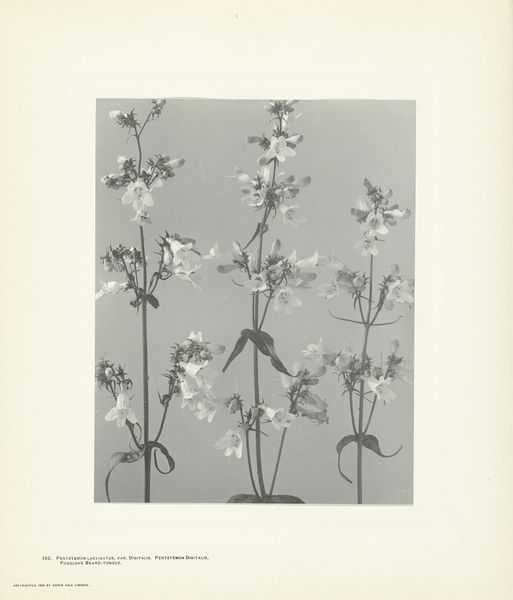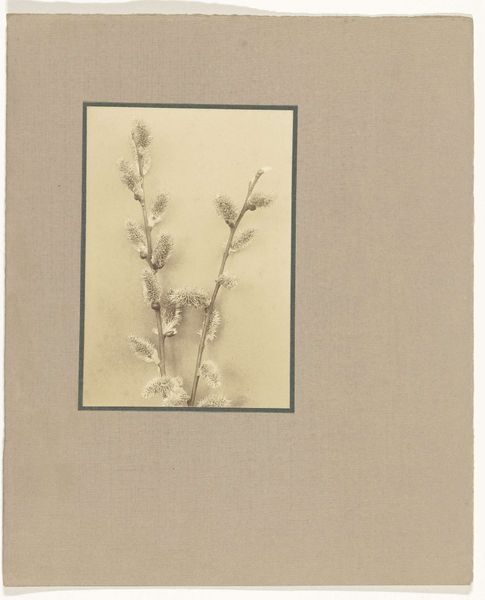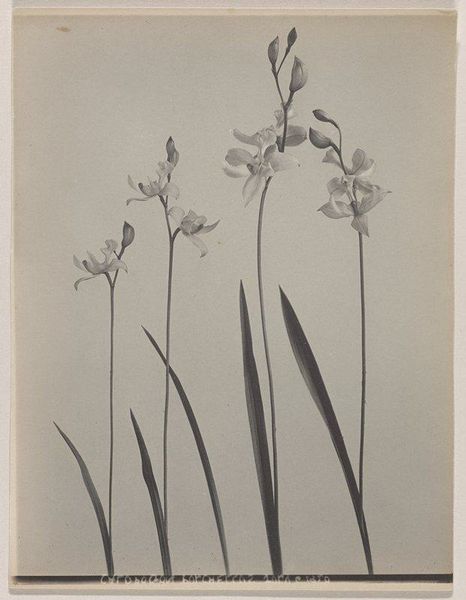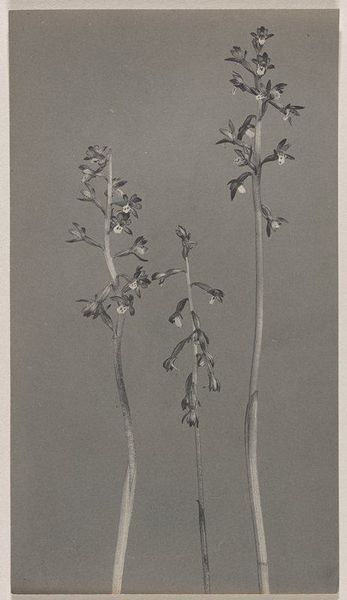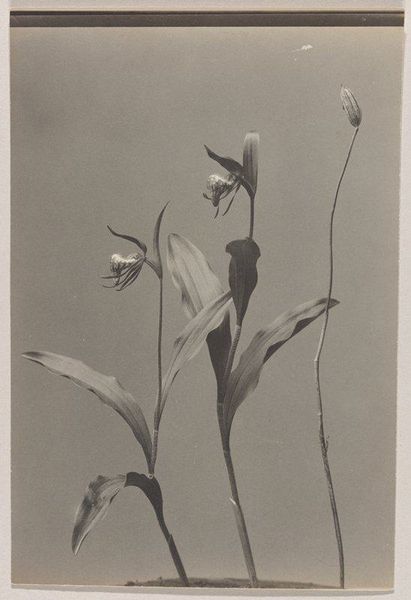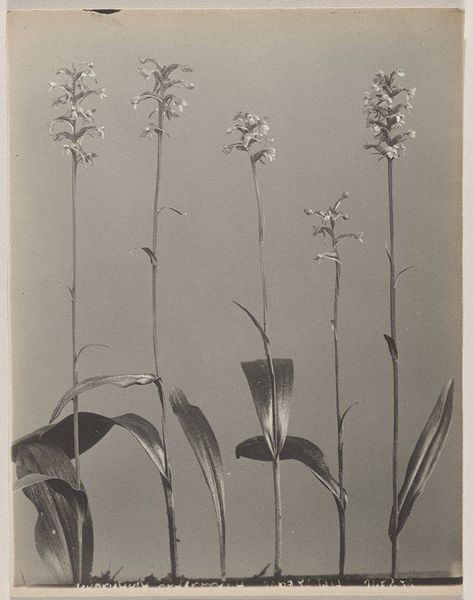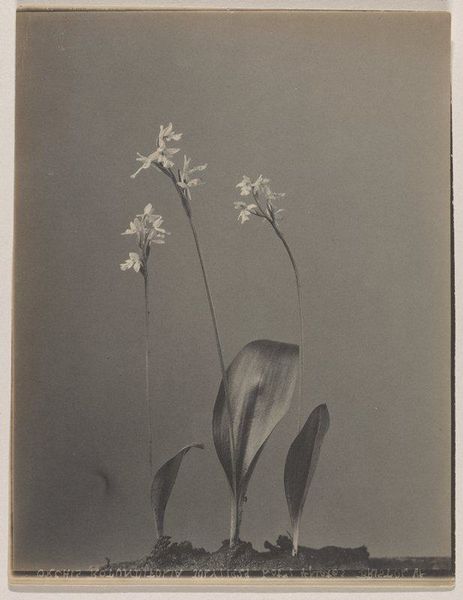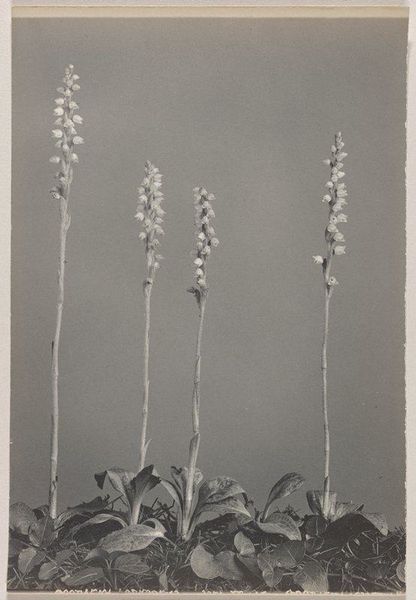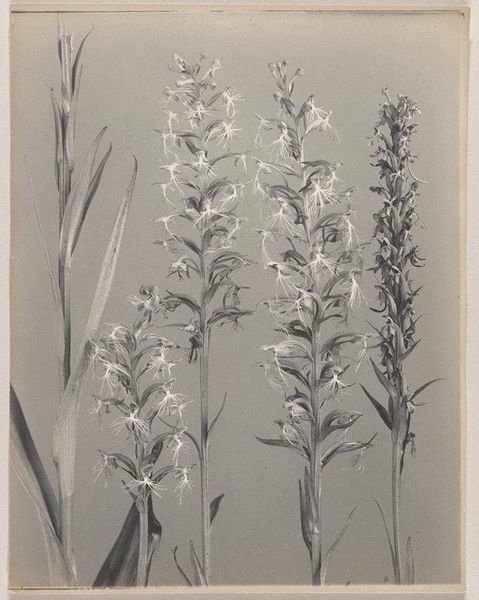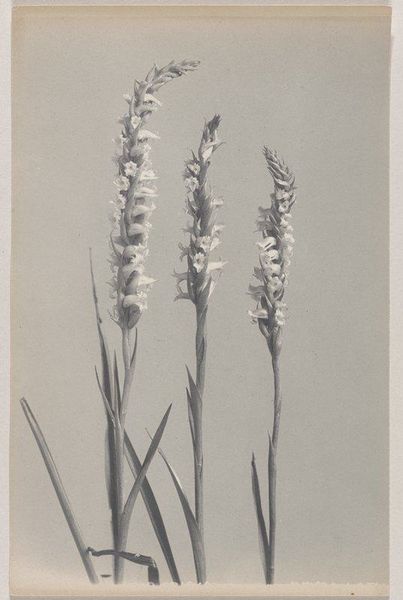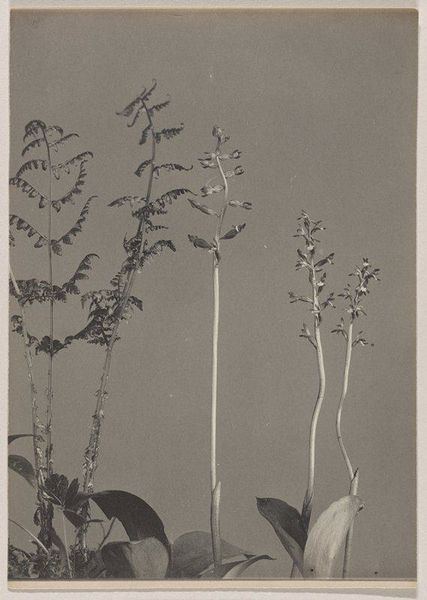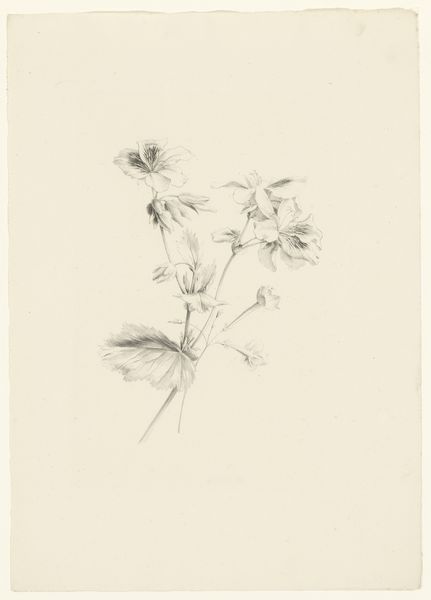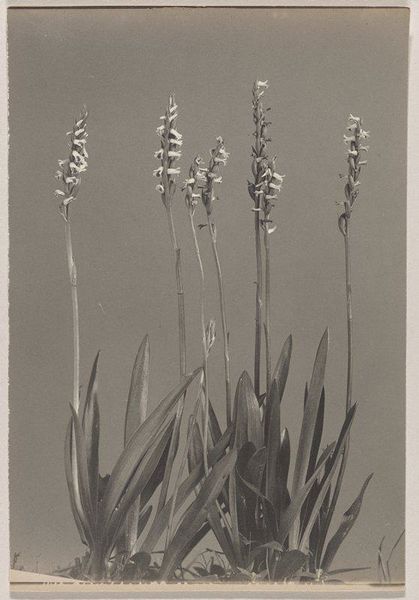
photogram, photography
#
still-life-photography
#
photogram
#
pictorialism
#
landscape
#
photography
Dimensions: height 235 mm, width 187 mm, height 354 mm, width 301 mm
Copyright: Rijks Museum: Open Domain
Editor: So, here we have Edwin Hale Lincoln’s "Vlasleeuwenbek," created in 1905 using a photogram. There's a certain haunting beauty to it, wouldn't you agree? What do you find particularly striking about this work? Curator: Haunting, yes, but also hopeful, like pressed flowers in a forgotten book of poems. You know, looking at the linear structure, and how the flowers emerge so crisply out of what’s also visible as clear gray void… it makes me wonder about the relationship between realism and the artist’s intervention. This feels both hyper-real in its botanical accuracy, yet ethereal because it's a manipulated medium. What feelings do you get from its use of gray tonality? Editor: I think that is the real pull for me - the tonality and detail force me to see real-world things from new perspectives, as if the artist is isolating reality just to study it! Curator: Exactly! And "isolate" is such a key idea here. Do you feel the background focuses attention onto the flowers themselves or maybe isolates us from understanding context for them? Think of this in relation to something like landscape art. Does the absence of depth perception affect this relationship at all? Editor: I can see that—the stark background throws their delicate structures into sharp relief. But the absence of a broader setting definitely gives them a sense of the uncanny, somehow. What do you suppose that communicates about this work? Curator: It really emphasizes the beauty and fragility of natural form doesn’t it? But perhaps it shows that without proper understanding of this context, or this kind of perspective, even what’s natural can seem quite uncanny, as you mentioned! I really never thought about it that way myself... Thanks! Editor: That's a brilliant insight, especially regarding the background isolating the details in a new way. I guess there’s always a different way of looking at these things.
Comments
No comments
Be the first to comment and join the conversation on the ultimate creative platform.
